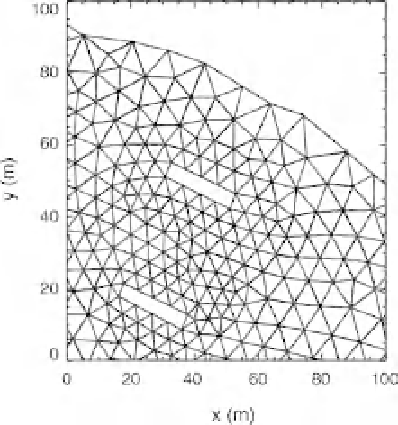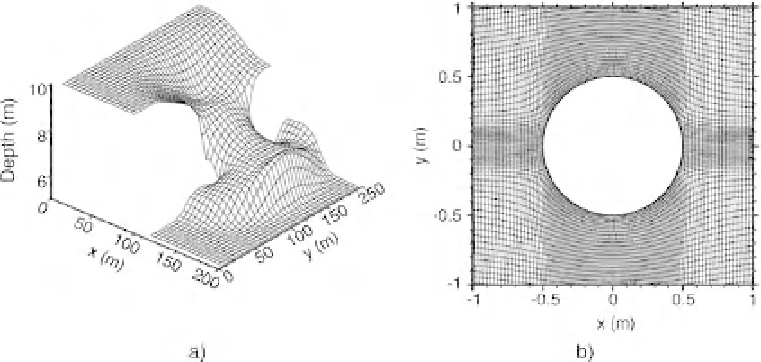Environmental Engineering Reference
In-Depth Information
Fig. 12.2
(a) Dam-break simulation on a structured square grid. FromLiang et al. (2006). (b) Boundary-fitted grid. From
Liang et al. (2007).
contours, and to apply a non-uniformresolution. It
can be refined locally to take into account fine
features in the flow, while keeping a low resolu-
tion in areas where refinement is not needed,
thereby ensuring an optimal use of computer
power. However, the finer areas usually dictate
that a smaller time step be used, which can in-
crease computation time.
The choice of discretization strategy is linked to
the choice of grid type. Finite Difference methods
are suited to structured grids only, whereas most
Finite Element and Finite Volume methods have
been designed with both structured and unstruc-
tured grids in mind. Recent advances and current
challenges in the area of grid generation are further
presented below (see 'Discretization of the phys-
ical space').
One-dimensional versus two-dimensional
River floodplain modelling is the only context
where a comparison of 1D and 2D approaches is
relevant. Coastal floodplains can rarely be repre-
sented as networks of well-defined channels and
therefore 1D floodplain modelling is very rarely
appropriate for coastal flooding studies. Also, the
theory of open channel flow in the form of 1D
St-Venant equations is not applicable to urban
flood flows where extreme non-uniformity and
spatial variability of flow patterns is common.
Flows typically happen in sequences of fast-mov-
ing shallowflows (possibly supercritical) and large
still ponds, rather than in the formof channels that
are well defined over long distances. The signifi-
cance of storage and recirculation areas that clear-
ly do not fit in a 1D description should not be
underestimated. Besides, urban flows rarely hap-
pen along routes that are clearly identifiable in
advance of building a model and running the
Fig. 12.3
Unstructured mesh. FromHorritt et al. (2006).


